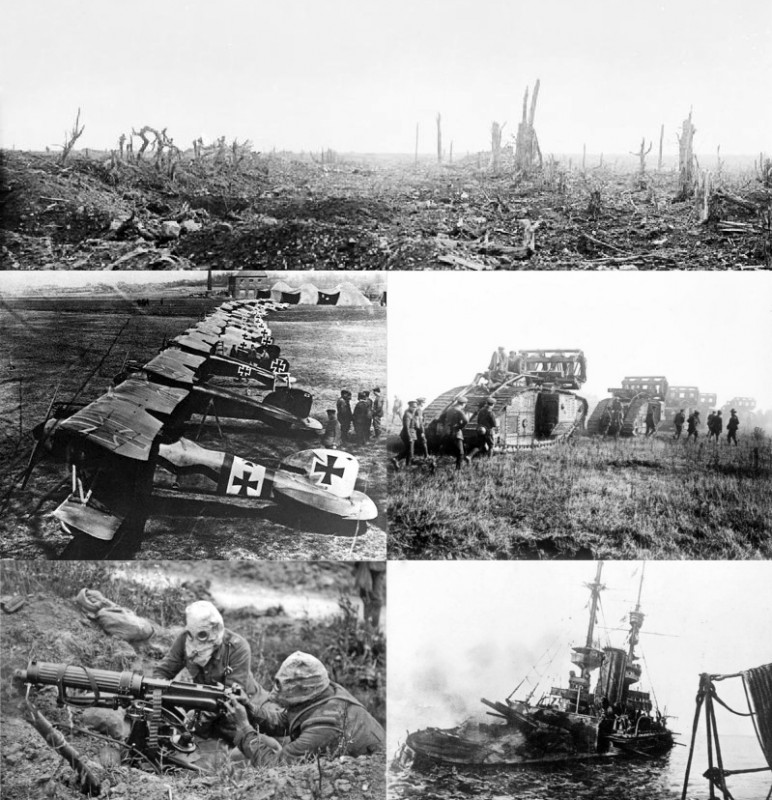The Gaza Strip, or Gaza, is a Palestinian territory bordering Egypt and Israel. It's one of the world's most densely populated areas, primarily inhabited by Palestinian refugees and their descendants. As of late 2024, the estimated population is 2.1 million, a 6% decrease from the previous year due to the Gaza war. Gaza City is its capital and largest city.
1906: Ottoman-British border setting
In 1906, the Ottoman and British Empires established the region's international border with Egypt.
1917: British Occupation of Gaza
In 1917-18, Britain occupied the Gaza Strip area.
1920: British rule under Mandatory Palestine
From 1920 until 1948, Britain kept and ruled the territory it occupied under the internationally accepted frame of "Mandatory Palestine".
1936: British Mandate's legal code as a base for Hamas legal code
The legal code Hamas applies in Gaza is based on Ottoman laws, the British Mandate's 1936 legal code, Palestinian Authority law, Sharia law, and Israeli military orders.
1946: Kibbutz established as part of Jewish Agency plan
Between 1946 and 1948, a small kibbutz existed for 18 months, it had been established as part of the Jewish Agency's "11 points in the Negev" plan.
1948: Kibbutz established as part of Jewish Agency plan
Between 1946 and 1948, a small kibbutz existed for 18 months, it had been established as part of the Jewish Agency's "11 points in the Negev" plan.
1948: Influx of Palestinian refugees into Gaza
Following the 1948 Arab-Israeli war, over 200,000 refugees from former Mandatory Palestine entered Gaza, leading to a decrease in the standard of living.
1948: Arab-Israeli War
The majority of Gaza residents descend from refugees who were driven from or left their homes during the 1948 Arab–Israeli War.
1948: Britain deferred governance of the Gaza Strip area to Egypt
With the defeat of the Central Powers in World War I and the subsequent partition of the Ottoman Empire, Britain deferred the governance of the Gaza Strip area to Egypt, which declined the responsibility.
December 1956: Alleged massacre in Khan Yunis
On 15 December 1956, claims of a massacre committed by Israeli troops in Khan Yunis were reported to the United Nations General Assembly by UNRWA director Henry Labouisse.
1956: Israeli invasion of Gaza and Sinai Peninsula
During the 1956 Suez Crisis, Israel invaded Gaza and the Sinai Peninsula. On 3 November, the Israel Defense Forces (IDF) attacked Egyptian and Palestinian forces at Khan Yunis. The city of Khan Yunis resisted being captured, and Israel responded with a heavy bombing campaign.
1956: Israeli occupation during Suez Crisis
During the Suez Crisis of 1956, Gaza was occupied by Israeli troops, who later withdrew under international pressure.
March 1957: End of Israeli occupation
In March 1957, Israel ended the occupation of Gaza amid international pressure.
1959: Dissolution of All-Palestine Government
In 1959, the All-Palestine government was dissolved by decree of Egyptian president Gamal Abdul Nasser and moved to Cairo.
June 1967: IDF capture of Gaza during the Six-Day War
In June 1967, during the Six-Day War, the IDF captured Gaza, and dozens of Palestinians were executed without trial.
December 1967: Discussions on managing Arab population
In December 1967, the Security Cabinet brainstormed about what to do with the Arab population of the newly occupied territories, one suggestion was to restrict their access to water supplies. Following the 1967 Arab-Israeli War, "various international agencies struggled to respond" and American Near East Refugee Aid was founded to help victims of the conflict by providing immediate emergency relief.
1967: Eviction of Gaza residents by Israel
Between 1967 and 1968, Israel evicted approximately 75,000 residents of the Gaza Strip.
1967: Beginning of Israeli policies of "de-development"
Sara Roy describes that the framework for Israeli policy established between 1967 and 1973 would not change, even with the limited self-rule introduced by the Oslo Accords in the 1990s, but would grow dramatically more draconian in the early 2000s.
1968: Prevention of Gazan residents from returning
Between 1967 and 1968, at least 25,000 Gazan residents were prevented from returning after the 1967 war.
1969: Limited economic development in Gaza
Between 1973 and 1987, official policy on economic development in the Gaza Strip remained the same as in 1969 with limited local investment and economic opportunity coming primarily from employment in Israel.
1970: Implementation of 'five finger' strategy
In 1970-1971, Ariel Sharon implemented what became known as a 'five finger' strategy, which consisted in creating military areas and settlements by breaking the Strip into five zones to better enable Israeli occupation, settlement and, by discontinuous fragmentation of the Palestinian zones created, allow an efficient management of the area.
1971: Implementation of 'five finger' strategy
In 1970-1971, Ariel Sharon implemented what became known as a 'five finger' strategy, which consisted in creating military areas and settlements by breaking the Strip into five zones to better enable Israeli occupation, settlement and, by discontinuous fragmentation of the Palestinian zones created, allow an efficient management of the area.
1973: Limited economic development in Gaza
Between 1973 and 1987, official policy on economic development in the Gaza Strip remained the same as in 1969 with limited local investment and economic opportunity coming primarily from employment in Israel.
1973: Israeli policies of "de-development"
Sara Roy describes that the framework for Israeli policy established between 1967 and 1973 would not change, even with the limited self-rule introduced by the Oslo Accords in the 1990s, but would grow dramatically more draconian in the early 2000s.
1982: Economic Growth
The economic growth rate from 1967 to 1982 averaged roughly 9.7 percent per annum.
1984: Limited investment in Gaza
Between 1984 and 1986, the Israeli military government's expenditure on industry in the Gaza Strip was 0.3% of the total budget, with no investment in industry development.
1984: Meron Benvenisti describes Israeli policy
In 1984, Meron Benvenisti, former deputy mayor of Jerusalem, characterized Israeli policy in the occupied territories as motivated by the view that Palestinian claims to economic and political rights are illegitimate, asserting that economic policies stifled Palestinian economic development to prevent the establishment of a Palestinian state.
1986: Limited investment in Gaza
Between 1984 and 1986, the Israeli military government's expenditure on industry in the Gaza Strip was 0.3% of the total budget, with no investment in industry development.
December 1987: First Intifada begins
In December 1987, the First Intifada, a series of protests and violent riots by Palestinians, began in the Israeli-occupied territories and Israel.
December 1987: Beginning of the Intifada
On 9 December 1987, the intifada began in the Jabalia refugee camp in the Gaza Strip after an Israeli army truck collided with a civilian car, killing four Palestinian workers. The response included protests, civil disobedience, violence, graffiti, barricading, throwing stones and Molotov cocktails, general strikes, and boycotts.
1987: Limited economic development in Gaza
Between 1973 and 1987, official policy on economic development in the Gaza Strip remained the same as in 1969 with limited local investment and economic opportunity coming primarily from employment in Israel.
1987: Gaza's GNP from external payments
By 1987, 60% of Gaza's GNP came from external payments, primarily through employment in Israel, highlighting the economy's extreme dependence on Israel during this period.
1987: Hamas campaign for wearing the hijab
From 1987 to 1991, during the First Intifada, Hamas campaigned for the wearing of the hijab head-cover, leading to harassment of women who chose not to wear it.
1989: Publication of Gaza Stories
In 1989, some written versions of Hikaye stories were recorded from Gaza and published alongside many others, in the volume Speak Bird, Speak Again.
1991: Hamas campaign for wearing the hijab
From 1987 to 1991, during the First Intifada, Hamas campaigned for the wearing of the hijab head-cover, leading to harassment of women who chose not to wear it.
1991: Madrid Conference
In 1991, the Madrid Conference took place during the First Intifada.
1991: Peak fertility rate
In 1991, the total fertility rate in the Gaza Strip peaked at 8.3 children per woman.
1992: Gaza's Labor Force in Israel
In 1992, 70% of Gaza's labor force worked in Israel, 90% of Gaza's imports came through Israel, and 80% of its exports went through Israel.
1992: Israeli Government prohibited factories
Until 1992, juice and vegetable processing factories, which could make productive use of crop surpluses, were prohibited by the Israeli government.
1993: Oslo Accords
In 1993, the Oslo Accords were signed, marking the end of the First Intifada for some.
1993: Creation of program
In 2010, Al Zahara, a private school in central Gaza, introduced a special program for mental development based on math computations. The program was created in Malaysia in 1993, according to the school principal, Majed al-Bari.
May 1994: Transfer of Authority
In May 1994, governmental authority began to be transferred to the Palestinians following the Oslo Accords. Much of the Gaza Strip, except for settlement blocs and military areas, came under Palestinian control. Israeli forces left Gaza City, and the Palestinian Authority, led by Yasser Arafat, chose it as its first provincial headquarters.
1994: Municipalities lacked authority
From the start of the occupation until 1994, municipalities did not have authority over water and electricity allocation, public markets, public health, and transportation.
1994: Construction of Gaza-Israel barrier
In 1994, Israel began constructing the Gaza–Israel barrier to improve security in Israel.
1994: Gaza Jericho Agreement Allows 20 Nautical Miles
In 1994, the Gaza Jericho Agreement allows 20 nautical miles.
1996: Completion of Gaza-Israel barrier
By 1996, Israel had completed the construction of the Gaza-Israel barrier.
November 1998: Opening of Yasser Arafat International Airport
The Yasser Arafat International Airport opened in November 1998 after the signing of the Oslo II Accord and the Wye River Memorandum.
1998: Opening of Gaza Airport
In 1998, an airport was constructed and opened in Gaza, as permitted to Palestinians in the Oslo Accords.
July 2000: Failure of Camp David Summit
In July 2000, the failure of the Camp David Summit, which aimed to finalize the Israeli–Palestinian peace process, contributed to the unrest that would become the Second Intifada.
September 2000: Barrier torn down
In September 2000, Palestinians largely tore down the Gaza–Israel barrier at the beginning of the Second Intifada.
September 2000: Outbreak of Violence
In September 2000, violence broke out after Ariel Sharon's visit to the Al-Aqsa compound, sparking protests and riots. The Second Intifada also marked the beginning of rocket attacks and bombings of Israeli border localities.
October 2000: Closure of Yasser Arafat International Airport
The Yasser Arafat International Airport was forced to close after Israeli deconstruction in October 2000.
December 2000: Reconstruction of Gaza-Israel barrier
In December 2000, reconstruction of the barrier between Gaza and Israel began.
2000: Increase in People Requiring Assistance
In 2000, 72,000 people required assistance from UN agencies.
2000: Expansion of Gaza Buffer Zone
In 2000, Israel expanded the buffer zone in Gaza to 150 meters from the initial 50 meters.
June 2001: Completion of barrier reconstruction
By June 2001, the barrier between Gaza and Israel was reconstructed.
2001: Destruction of Gaza Airport
In 2001, during the Second Intifada, Israel destroyed Gaza's only airport.
2001: Destruction of radar station and control tower
In 2001, during the al-Aqsa Intifada, Israel Defense Forces aircraft destroyed the radar station and control tower of the Yasser Arafat International Airport.
January 2002: Razing of Yasser Arafat International Airport runway
In January 2002, bulldozers razed the runway of the Yasser Arafat International Airport.
2002: Second Destruction of Gaza Airport
In 2002, Israel again destroyed Gaza's only airport during the Second Intifada.
2002: Bertini Commitment Allows 12 Nautical Miles
In 2002, the Bertini Commitment allows 12 nautical miles.
2002: Dietary Deficiency in Gaza
In late 2002, a study by Johns Hopkins University and Al-Quds University for CARE International revealed high levels of dietary deficiency among the Palestinian population, with 17.5% of children aged 6–59 months suffering from chronic malnutrition and 53% of women of reproductive age and 44% of children found to be anemic.
2003: College moved into new campus
In 2003, the Community College of Applied Science and Technology (CCAST) moved into its new campus.
2004: Construction of Gaza-Egypt border barrier
In 2004, construction began on a barrier on the Gaza Strip-Egypt border.
2004: Household Media Access
In 2004, most Gaza households had a radio and a TV (70%+), and approximately 20% had a personal computer.
2005: Export losses due to blockade
According to The Washington Institute for Near East Policy, the blockade resulted in a loss of over $17 million in exports in 2006 from 2005.
2005: Appearance of the Salafist movement
Around 2005, a Salafist movement began to appear in Gaza, characterized by "a strict lifestyle based on that of the earliest followers of Islam".
2005: Israeli disengagement from Gaza
Despite the 2005 Israeli disengagement from Gaza, the United Nations, international human rights organisations, and the majority of governments and legal commentators consider the territory to be still occupied by Israel, supported by additional restrictions placed on Gaza by Egypt.
2005: Israeli Disengagement and Maintenance of Buffer Zone
Following the 2005 Israeli disengagement from Gaza, an undefined buffer zone was maintained, including a no-fishing zone, which led to the virtual cessation of the fishing industry in Gaza.
2005: Israeli disengagement and temporary blockade
In 2005, Israel withdrew its military forces and dismantled settlements from Gaza, implementing a temporary blockade.
2005: Israel Maintains Obligations under Occupation Law
In 2005, legal scholars argued that despite Israel's withdrawal, it maintained obligations under occupation law due to continued control over Gaza's borders, movement restrictions, tax collection, and military control.
2005: Israeli Disengagement and Shift in Economic Policy
In 2005, political economist Sara Roy described the Israeli disengagement from Gaza as a turning point, shifting Israeli policy from controlling the economy to disabling it, with the political goal of reducing demands for national, political, and economic rights to a humanitarian problem.
2005: Total number of settlements established in Gaza
In total, between 1967 and 2005, Israel established 21 settlements in Gaza, comprising 20% of the total territory.
2005: Some legal commentators agree with the Israeli position
Some legal commentators agree with the Israeli position after 2005 that there is no effective control under Article 42 of the Hague Regulations
January 2006: Hamas Victory in Elections
On 25 January 2006, Hamas won a plurality in the Palestinian parliamentary elections, securing 42.9% of the vote and 74 out of 132 seats.
2006: Decrease in Living Standards
A UN report in 2022 estimated that living standards went down by 27% compared to 2006.
2006: Blockade Leads to Export Losses
According to The Washington Institute for Near East Policy, the blockade resulted in a loss of over $17 million in exports in 2006 from 2005.
2006: Formation of Palestinian unity government
Following the 2006 Palestinian legislative election victory by Hamas, Hamas and Fatah formed the Palestinian authority national unity government headed by Ismail Haniyeh.
2006: Escalation of conflict
From 2006 to 2007, more than 600 Palestinians were killed in fighting between Hamas and Fatah.
2006: Hamas electoral victory
In 2006, Hamas defeated Fatah in elections, leading to Hamas taking over the governance of Gaza the following year.
2006: Establishment of GPI
In 2006, the Gaza Polytechnic Institute (GPI) was established in southern Gaza by the Community College of Applied Science and Technology (CCAST).
January 2007: Fighting between Hamas and Fatah
In January 2007, fighting erupted between Hamas and Fatah, with the deadliest clashes occurring in the northern Gaza Strip. A truce was negotiated on 30 January 2007, but new fighting broke out soon after.
May 2007: Resignation of Interior Minister
In May 2007, new fighting broke out between Hamas and Fatah. Interior Minister Hani Qawasmi resigned due to harmful behavior by both sides.
June 2007: Hamas takeover
After Hamas's June 2007 takeover, it ousted Fatah-linked officials from positions of power and authority and strove to enforce law by progressively removing guns from the hands of peripheral militias, clans, and criminal groups, and gaining control of supply tunnels. According to Amnesty International, under Hamas rule, newspapers were closed down and journalists were harassed.
October 2007: Abduction and murder of Christian bookshop owner
In October 2007, the owner of a Christian bookshop was abducted and murdered in Gaza.
2007: Medical Permits Granted and Denied by Israel
In 2007, the State of Israel granted 7,176 medical visa permits to Gazans seeking medical care in Israeli hospitals and denied 1,627 permits.
2007: Intensified fighting between Hamas and Fatah
In 2007, the fighting between Hamas and Fatah intensified, resulting in 349 Palestinian deaths, with 160 Palestinians killed in June alone.
2007: Hamas takes over, attempts to impose Islamic dress
Since Hamas took over in 2007, attempts have been made by Islamist activists to impose "Islamic dress" and to require women to wear the hijab.
2007: Hamas takeover
Since the Hamas takeover in 2007, the Gaza Strip has been described as a "de facto one-party state."
January 2008: Foreign Affairs Minister of Israel Tzipi Livni stated that Israel got out of Gaza
Foreign Affairs Minister of Israel Tzipi Livni stated in January 2008: "Israel got out of Gaza. It dismantled its settlements there. No Israeli soldiers were left there after the disengagement."
January 2008: Israel curtails travel, entry of goods, and fuel supplies to Gaza
In January 2008, Israel curtailed travel from Gaza, the entry of goods, and cut fuel supplies, resulting in power shortages. This brought charges that Israel was inflicting collective punishment on the Gaza population, leading to international condemnation.
February 2008: Intensified Conflict
In February 2008, the Gaza–Israel conflict intensified, with rockets launched at Israeli cities. Israeli military action on 29 February 2008 resulted in over 110 Palestinian deaths and 2 Israeli soldiers' deaths.
February 2008: Bombing of YMCA library in Gaza City
In February 2008, the Young Men's Christian Association (YMCA) library in Gaza City was bombed.
June 2008: Recognition of Abbas Government
In late June 2008, Egypt, Saudi Arabia, and Jordan declared the West Bank-based cabinet formed by Abbas as the sole legitimate Palestinian government. Egypt moved its embassy from Gaza to the West Bank.
2008: UNESCO Inscription of Hikaye
In 2008, Hikaye, an important aspect of Palestinian women's oral culture, was inscribed by UNESCO to its list of intangible cultural heritage.
2008: Establishment of the Gaza Museum of Archaeology
In 2008, the Gaza Museum of Archaeology was established by Jawdat N. Khoudary.
2008: Application of international humanitarian law to Israel during the 2008-2009 Israel-Gaza conflict
In his statement on the 2008–2009 Israel–Gaza conflict, Richard Falk, United Nations Special Rapporteur wrote that international humanitarian law applied to Israel "in regard to the obligations of an Occupying Power and in the requirements of the laws of war."
2009: Per Capita Income
In 2009, Gaza's per capita income was estimated at US$3,100, a position of 164th in the world.
2009: Israel Expands Gaza Buffer Zone
In 2009, Israel expanded the buffer zone in Gaza to 300 meters.
2009: Application of international humanitarian law to Israel during the 2008-2009 Israel-Gaza conflict
In his statement on the 2008–2009 Israel–Gaza conflict, Richard Falk, United Nations Special Rapporteur wrote that international humanitarian law applied to Israel "in regard to the obligations of an Occupying Power and in the requirements of the laws of war."
June 2010: Israel Eases Restrictions Due to International Pressure
In June 2010, Israel eased restrictions following the Gaza flotilla raid and decreased food shortages due to international pressure.
November 2010: Casualties from Rocket Attacks and Israeli Fire
In the 18 months leading up to November 2010, one Thai farm worker in Israel was killed by a rocket fired from Gaza. Also in 2010, 180 rockets and mortars had been fired into Israel by militants, and 11 Palestinian civilians, including four children, were killed by Israeli fire, with at least 70 injured.
2010: Gaza Strip Population Statistics
As of 2010, the population of the Gaza Strip mostly comprised Palestinians and refugees. It has a high proportion of youth.
2010: Al Zahara school introduced program
In 2010, Al Zahara, a private school in central Gaza, introduced a special program for mental development based on math computations.
2010: Inauguration of Olympic-Size Swimming Pool
In 2010, Gaza inaugurated its first Olympic-size swimming pool at the As-Sadaka club. The opening ceremony was held by the Islamic Society.
2010: Israel Maintains Expanded Buffer Zone
In 2010, Israel maintained the buffer zone expanded in 2009 to 300 meters from the security fence, although reports indicated that the area extended at least a kilometer before 2012.
2010: Student population of CCAST
In 2010, the Community College of Applied Science and Technology (CCAST) had a student population of 6,000, in eight departments offering over 40 majors.
February 2011: UNOCHA Assesses Easing of Blockade Measures
In February 2011, UNOCHA assessed the easing of the blockade and concluded that the measures were helpful but not sufficient, calling for reduced restrictions on exports and construction material imports, and lifting the ban on movement between Gaza and the West Bank via Israel.
May 2011: Egypt Permanently Opens Border with Gaza
In May 2011, after Egyptian president Hosni Mubarak resigned, Egypt permanently opened its border with Gaza to students, medical patients, and foreign passport holders.
June 2011: Gazans block UNRWA services
In June 2011, some Gazans, upset that UNRWA did not rebuild their homes that were lost in the Second Intifada, blocked UNRWA from performing its services and shut down UNRWA's summer camps.
2011: Closure of Karni Crossing
In 2011, the eastern Karni Crossing, used for cargo, was closed down.
September 2012: Announcement of the Hamas government of 2012
In early September 2012, the Hamas government of 2012 was announced, marking the second Palestinian Hamas-dominated government ruling over the Gaza Strip since the split of the Palestinian National Authority in 2007.
November 2012: Ceasefire Agreement and Buffer Zone Declaration
Following a November 2012 ceasefire, Israel declared a buffer zone of 100 meters on land and 6 nautical miles offshore.
2012: Impact of Buffer Zone on Gaza's Territory and Agriculture
In 2012, a UN report estimated that the buffer zone accounted for 14% of Gaza's territory, containing 30–55% of its arable land, resulting in a loss of 75,000 metric tons of potential produce per year, valued at US$50.2 million.
2012: World Bank Report on Restricted Access to Gaza
In 2012, the World Bank reported that access to Gaza remained highly restricted, with exports to the West Bank and Israel prohibited.
2012: WHO Study on Health in Gaza
In 2012, the World Health Organization reported that roughly 50% of young children and infants under two years old and 39.1% of pregnant women receiving antenatal services care in Gaza suffered from iron-deficiency anemia. The organization also observed that chronic malnutrition in children under five "is not improving and may be deteriorating."
2012: Universities and schools
In 2012, there were five universities in the Gaza Strip and eight new schools were under construction.
2012: Hospital Construction Funded by Turkey and Saudi Arabia
In 2012, two hospitals funded by Turkey and Saudi Arabia were under construction in Gaza.
2012: Description of the system of control imposed by Israel as an "indirect occupation"
The system of control imposed by Israel was described in the fall 2012 edition of International Security as an "indirect occupation".
February 2013: Israel Changes Buffer Zone Limits
In February 2013, Israel changed the buffer zone to 300 meters on land and 3 nautical miles offshore.
June 2013: Islamic Jihad broke ties with Hamas leaders
In June 2013, the Islamic Jihad broke ties with Hamas leaders after Hamas police fatally shot the commander of Islamic Jihad's military wing.
August 2013: Closure of Border Crossing Following Egyptian Coup
Following the August 2013 Rabaa Massacre in Egypt and the 2013 Egyptian coup d'état, Egypt's military destroyed most of the smuggling tunnels, and the border crossing was closed indefinitely.
2013: EU Description of Gaza Economy
In 2013, the EU described the Gaza economy as one of chronic need, de-development, and donor dependency, with exports down to 2% of 2007 levels due to the closure imposed by Israel.
2013: Fertility rate
In 2013, the total fertility rate in the Gaza Strip was 4.4 children per woman, still among the highest worldwide.
June 2014: Fatah-Hamas Unity Agreement
On 5 June 2014, Fatah signed a unity agreement with the Hamas political party.
July 2014: Operation Protective Edge
In July 2014, Israel launched Operation Protective Edge in the Gaza Strip, following the kidnapping and murder of three Israeli teenagers. The conflict between Israel and the Palestinians resulted in thousands of deaths.
2014: Increase in People Requiring Assistance
By 2014, the number of people requiring assistance from UN agencies had risen to 800,000.
2014: Demographics of Gaza
In 2014, 43.5% of the population of Gaza was 14 or younger, and the median age was 18, compared to a world average of 28 and 30 in Israel.
2014: French President Calls for Demilitarization and Lifting of Blockade
In 2014, French president François Hollande called for the demilitarization of Gaza and a lifting of the blockade, stating that "Gaza must neither be an open prison nor a military base."
2014: Destruction of Agricultural Research Station
In 2014, Gaza's agricultural research and development station was destroyed by the Israeli military.
2014: Israeli Supreme Court judge Alex Stein argued that Gaza was not occupied
In 2014, Israeli Supreme Court judge Alex Stein argued that Gaza was not occupied.
2014: Destruction of Homes for Buffer Zone in Rafah
In 2014, scores of homes in Rafah were destroyed for a buffer zone on the Egyptian side of the Gaza-Egypt border, resulting in the destruction of over 800 homes and eviction of more than 1,000 families. Palestinian president Mahmoud Abbas agreed with the destruction of smuggling tunnels.
2014: Impact of Buffer Zone on Gaza's Population
In 2014, the IDMC estimated that 12% of Gaza's population was directly affected by the land and sea restrictions due to the buffer zone.
August 2015: IDF Confirms Different Buffer Zones for Residents and Farmers
In August 2015, the IDF confirmed a buffer zone of 300 meters for residents and 100 meters for farmers, without clarifying how to differentiate between the two groups, and noted that Israeli attacks occurred up to 1.5 km from the border, endangering 17% of Gaza's territory.
2015: Israeli Policy Towards Gaza
According to Sara Roy, in 2015, one senior IDF officer told an UNWRA official that Israel's policy towards Gaza consisted of: "No development, no prosperity, no humanitarian crisis."
2015: Number of Salafists in Gaza
As of 2015, there are estimated to be only "hundreds or perhaps a few thousand" Salafists in Gaza.
2015: Food Insecurity
In 2015, a UN report estimated that 72% of Gaza's population suffers from food insecurity.
January 2016: Second Destruction of Agricultural Research Station
In January 2016, Gaza's agricultural research and development station was destroyed again, while import of new equipment is obstructed.
2016: Food Insecurity
As of 2016, insecurity in obtaining sufficient food affected roughly 70% of Gaza households.
November 2018: Israeli Justice Minister Declares Gaza an Independent State
In November 2018, Israeli Justice Minister Ayelet Shaked asserted that Gaza is an independent state, stating that Palestinians "already have a state" in Gaza.
2018: Number of Universities
By 2018, nine universities were open in the Gaza Strip.
2018: War crimes accusation
In 2018, The Commission said it had "'reasonable grounds' to believe Israeli soldiers may have committed war crimes and shot at journalists, health workers and children during protests in Gaza.
2018: Norwegian Refugee Council Report on Gaza
In 2018, the Norwegian Refugee Council called Gaza "the world's largest open-air prison", highlighting the lack of access to clean water, reliable electricity, healthcare, food, and employment, and noting the psychological trauma and stunted growth suffered by Palestinian children.
February 2019: UN Report on Palestinian Deaths and Injuries
In late February 2019, a United Nations Human Rights Council's independent commission found that of the 489 cases of Palestinian deaths or injuries analyzed, only two were possibly justified as responses to danger by Israeli security forces. The commission deemed the rest of the cases illegal.
February 2019: War crimes accusation
On 28 February 2019, the Commission said it had "'reasonable grounds' to believe Israeli soldiers may have committed war crimes and shot at journalists, health workers and children during protests in Gaza in 2018." Israel refused to take part in the inquiry and rejected the report.
December 2019: End of Great March of Return
On 27 December 2019, the Great March of Return ended. A total of 223 Palestinians were killed by Israeli forces during these protests.
2019: Literacy rate
In 2019, Palestine had a reported 97% literacy rate (96% for females, 99% for males).
2020: Youth literacy rate
In 2020, the youth literacy rate (ages 15–24) in Palestine was 88% (94% for females, 82% for males).
June 2021: World Bank delegation visits Gaza
In June 2021, specifically on the 13th, a high-level World Bank delegation visited Gaza to assess the damage following the 2021 Israel-Palestine crisis. Mobilization with UN and EU partners was ongoing to finalize a needs assessment in support of Gaza's reconstruction and recovery.
2021: Water sources in Gaza
In 2021, 90% of the water in the Gaza Strip came from groundwater wells and 6% from Israel's Mekorot.
August 2022: Escalation results in property damage and displacement
In August 2022, between the 5th and the 8th, an escalation resulted in property damage and the displacement of people due to airstrikes.
2022: Human Rights Watch Report on Gaza Strip
In 2022, Human Rights Watch issued a report describing the Gaza Strip as an "open-air prison" due to the blockade, citing humanitarian crises, shortages of essential supplies, limited healthcare access, and high poverty and unemployment levels. The report highlighted Israel's policy of separation between Gaza and the West Bank, restricting the movement of Palestinians.
2022: UN Report Estimates High Unemployment and Poverty Rates
In 2022, a UN report estimated Gaza Strip's unemployment rate to be 45% and 65% of the population under poverty, with 80% dependent on international aid.
2022: Health Statistics in Gaza
In 2022, according to the World Health Organization, the average life expectancy in Gaza was 72.5 years for males and 75 years for females, similar to Egypt, Lebanon, or Jordan, but lower than in Israel.
October 2023: Destruction of Al Qarara Cultural Museum
In October 2023, the Al Qarara Cultural Museum in Khan Yunis was destroyed in an explosion as a result of an Israeli attack.
October 2023: Hamas invades Israel, Israel declares war on Hamas
On October 7, 2023, paramilitaries in Gaza, led by Hamas's Al-Qassam Brigades, invaded southwest Israel, killing at least 1,300 people and taking at least 236 hostages. On October 9, 2023, Israel declared war on Hamas and imposed a "total blockade" of the Gaza Strip, which was later eased due to pressure.
2023: Renewed campaign to return Israeli settlers to Gush Katif after Gaza war outbreak
After the outbreak of the Gaza war in 2023, there was a renewed campaign to return Israeli settlers to Gush Katif, including Hanan Ben Ari singing "We return to Gush Katif" to Israeli troops.
2023: Gaza's Population Growth Rate
In 2023, Gaza had an annual population growth rate of 1.99%, the 39th-highest in the world.
2023: Start of war resulting in humanitarian crisis
In 2023, the start of the war in Gaza led to large-scale loss of life, mass population displacement, a humanitarian crisis, and an imminent famine.
June 2024: Study estimates high death toll from traumatic injuries in Gaza
A study in The Lancet estimated 64,260 deaths in Gaza from traumatic injuries by June 2024, while noting a potentially larger death toll when "indirect" deaths are included.
July 2024: International Court of Justice ruling on Israel's presence in the Occupied Palestinian Territory
On July 19, 2024, the International Court of Justice ruled that Israel's presence in the Occupied Palestinian Territory is unlawful and that Israel should pay full reparations to the Palestinian people for the damage the occupation has caused, and determined that its policies violate the International Convention on the Elimination of All Forms of Racial Discrimination.
2024: United Nations official estimates time to clear debris in Gaza
In 2024, a United Nations official said that "it could take 14 years ... to clear debris, including rubble from destroyed buildings" as a result of the Gaza war.
2024: Population decline due to Gaza war
In 2024, the population of the Gaza Strip was estimated to be 2.1 million, marking a 6% decline from the previous year as a result of the Gaza war.
January 2025: Provisional ceasefire
In mid-January 2025, a provisional ceasefire began, lasting two months.
February 2025: Trump asserts the US would "take over the Gaza Strip"
On February 5, 2025, in a joint press conference with Benjamin Netanyahu, US president Donald Trump asserted that the US would "take over the Gaza Strip, we'll own it." The remark sparked discussions regarding US policy in the region.
May 2025: High figure for traumatic injury deaths in Gaza
As of May 2025, a comparable figure for traumatic injury deaths would be 93,000 (77,000 to 109,000), representing 4–5% of Gaza's pre-war population.
July 2025: Bombing of Holy Family Church
In July 2025, three more people were killed when Israel bombed Holy Family Church.
Mentioned in this timeline

Donald John Trump is an American politician media personality and...

Benjamin Bibi Netanyahu is a prominent Israeli politician and diplomat...

Radar is a radiodetermination system using radio waves to detect...
Saudi Arabia officially the Kingdom of Saudi Arabia KSA is...
Africa is the second-largest and second-most populous continent comprising of...

World War I a global conflict between the Allies and...
Trending

2 months ago Gwyneth Paltrow on Timothée Chalamet and Kylie Jenner's Relationship: 'Punk Rock'

Lisa Rinna is an American actress television personality and model known for her roles on soap operas like Days of...
8 months ago Barcelona and Real Madrid to Clash in Copa del Rey Final El Clasico.

5 months ago Student Loan Repayment Troubles: 460K Denied, Backlog Alarms, Forgiveness Halted.

Amy Winehouse - was a highly acclaimed English singer and songwriter celebrated for her distinctive contralto voice and genre-bending music...

8 months ago Dyson Daniels Wins 2024-25 NBA Most Improved Player; Zubac, Cunningham Runners-Up
Popular

Candace Owens is an American conservative political commentator and author...

Ilhan Omar is an American politician currently serving as the...

XXXTentacion born Jahseh Dwayne Ricardo Onfroy was a controversial yet...

Frederick Christ Trump Sr - was an American real estate...

Charles James Charlie Kirk was a prominent American right-wing political...

Cristiano Ronaldo often nicknamed CR is a Portuguese professional footballer...